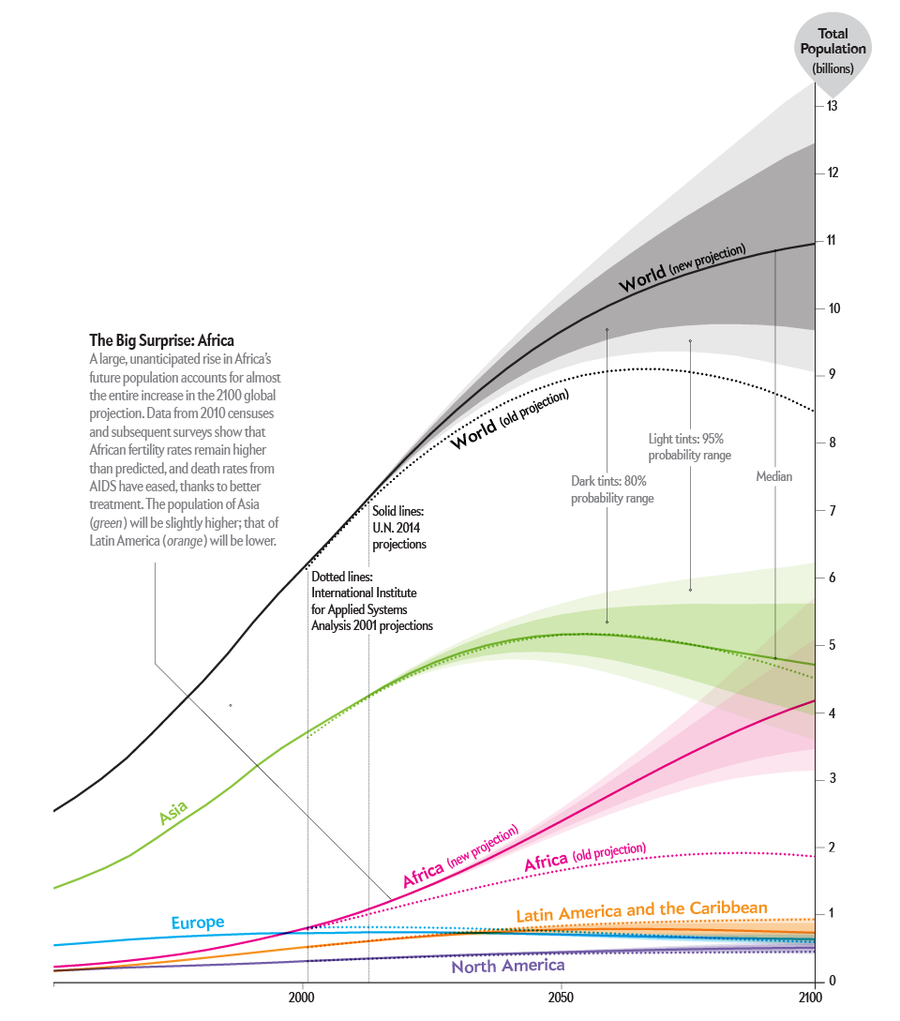
United Nations leaders have worried for decades about the pace of population growth. A few years ago leading calculations had global population peaking at nine billion by 2070 and then easing to 8.4 billion by 2100. Currently it stands at 7.2 billion. Recently the U.N. revised these numbers steeply upward: the population is now expected to rise to 9.6 billion by 2050 and continue to 10.9 billion by 2100 (black line, below). What caused this drastic revision? Almost all the increase comes from Africa (pink line). Earlier models “had anticipated that fertility rates in Africa would drop quickly, but they haven’t,” says Adrian Raftery, a statistician at the University of Washington, who assessed the revised estimates. How the world will feed a few billion more people is the question of the day.
On supporting science journalism
If you're enjoying this article, consider supporting our award-winning journalism by subscribing. By purchasing a subscription you are helping to ensure the future of impactful stories about the discoveries and ideas shaping our world today.
SCIENTIFIC AMERICAN ONLINE
For data on ratios of workers to retirees, see ScientificAmerican.com/dec2014/graphic-science